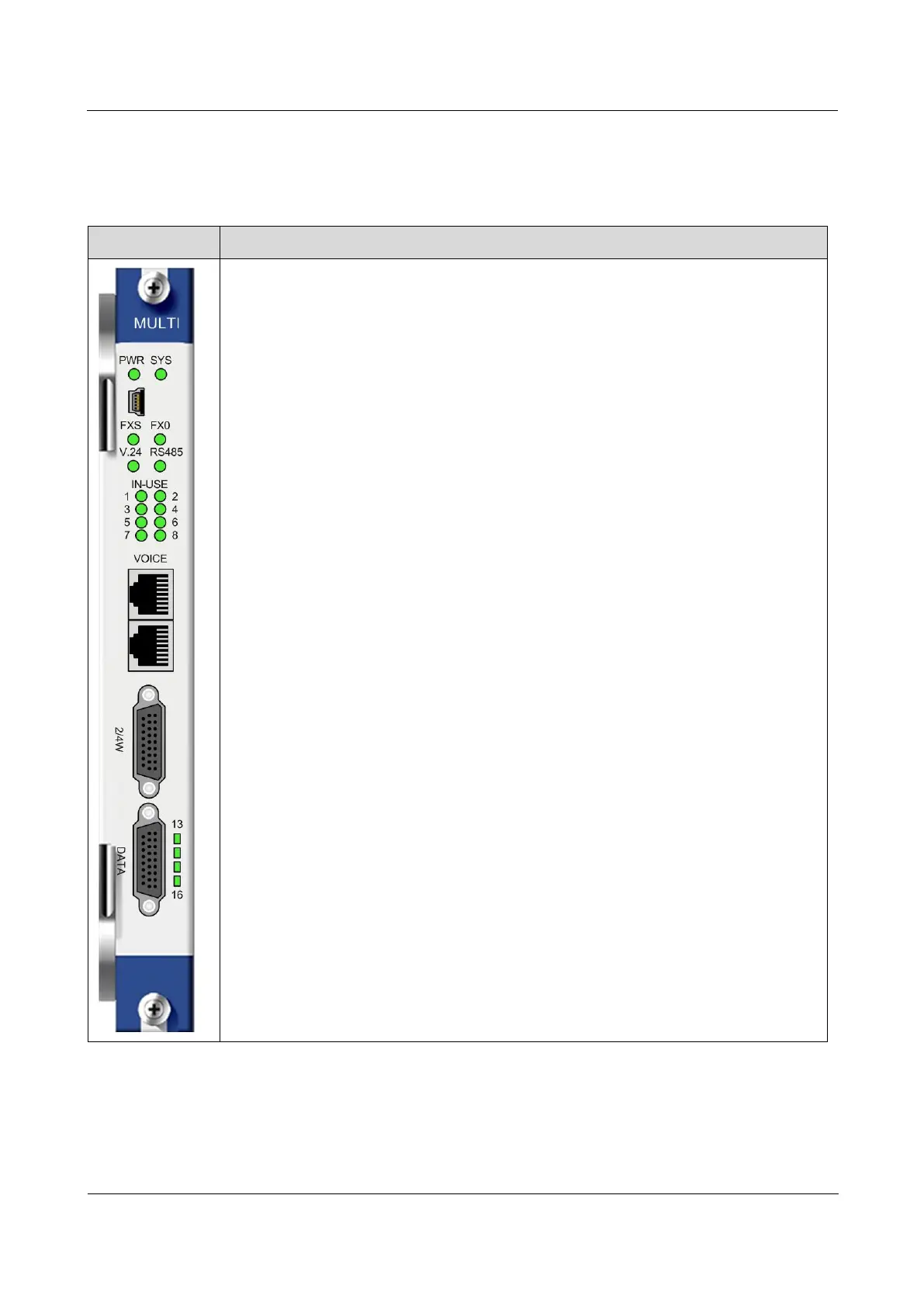The OPCOM3500E-MULTI is a multi-service access card used for accessing voice and
data services.
Provide 8 FXS/FXO voice interfaces, four 2/4W interfaces, and 4 data interfaces. The
interface name printed on the panel are VOICE, 2/4W, and DATA respectively.
FXS/FXO interfaces occupy 1–8 E1 timeslots. 2/4W interfaces occupies 9–12 E1
timeslots. Each channel of the data interfaces occupies 2 timeslots and 4 data channels
occupy 13–15 and 17–21 E1 timeslots. In addition, the E1 is in PCM30 mode.
FXS/FXO interfaces support FXS and FXO modules, which is decided by the internally-
inserted module. Up to 4 modules are available. You can insert fewer modules or insert
hybrid modules. When inserting hybrid modules, you must insert the FXS module first
and then insert the FXO module.
The voice gain of FXS/FXO interfaces is adjustable.
RX A/D ranges from -3 dB to 13 dB. By default, it is set to 0 dB.
TX D/A ranges from -13 dB to 3 dB. By default, it is set to -3.5 dB.
FXS/FXO interfaces support configuring signaling modes (original signaling and
reversed signaling) and signaling types (a-bit/b-bit signaling).
FXS/FXO interfaces support the hotline mode but do not support ringback tone.
2/4W interfaces support configuring 2/4W mode but do not support signaling.
The voice gain of the 2/4W interfaces is adjustable. The RX A/D ranges from -11 dB to
+19 dB. The default value is set by the DIP switch. The TX D/A ranges from -24 dB to
+7dB. The default value is set by the DIP switch.
2/4W interfaces support internal loopback and external loopback.
Data interfaces supports V.24 and RS485 modules, which is decided by the internally-
inserted module. Each module outputs 2-way data.
V.24 interfaces can work in synchronous mode (V.24) or asynchronous mode (RS232).
RS485 interfaces can work in full duplex mode (RS422) or half duplex mode (RS485).
Four-way RS232 interfaces occupy 1-way transparent transmission E1 respectively. The
E1 TX (in aggregation card direction) clock can be a local crystal oscillator or a SDH
system clock.
Clock phased of both directions of V.24 interfaces are adjustable.
Except for the RS485 mode, data interfaces support local internal loopback and external
loopback.
In RS232 mode, sampling frequency of interfaces can be set to 64 KHz, 128 KHz, or
2048 KHz and the related speeds are set to 9.6 Kbit/s, 19.2 Kbit/s, and 460.8 Kbit/s.
In V.24 mode, sampling frequency of interfaces can be set to 64 KHz or 128 KHz and
the related speeds are set to 9.6 Kbit/s and 19.2 Kbit/s.
In RS485/RS422 mode, sampling frequency of interfaces can be set to 64 KHz or 128
KHz and the related speeds are set to 9.6 Kbit/s and 19.2 Kbit/s.
Support upgrading the card online.

